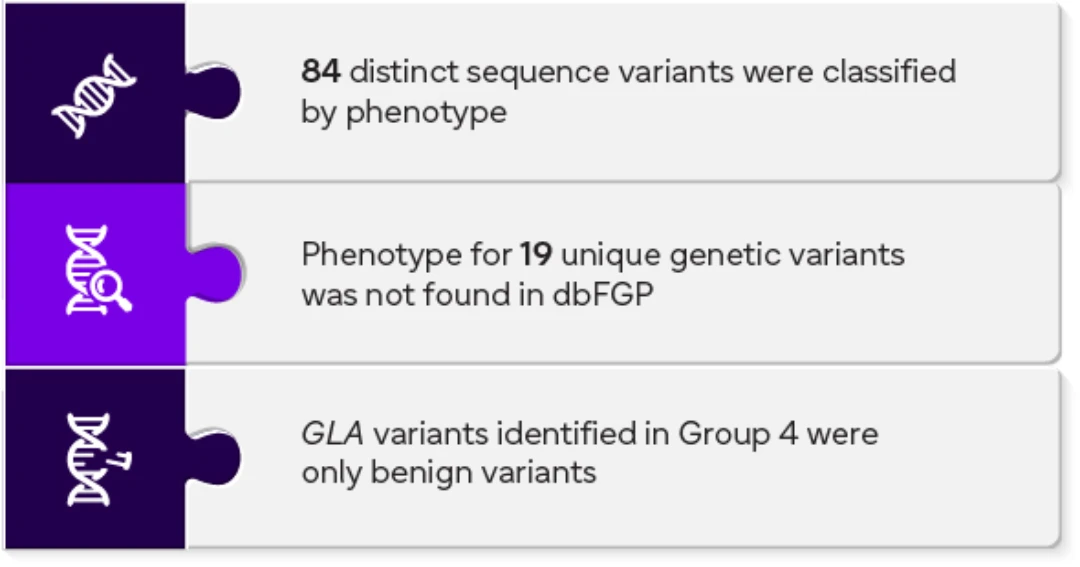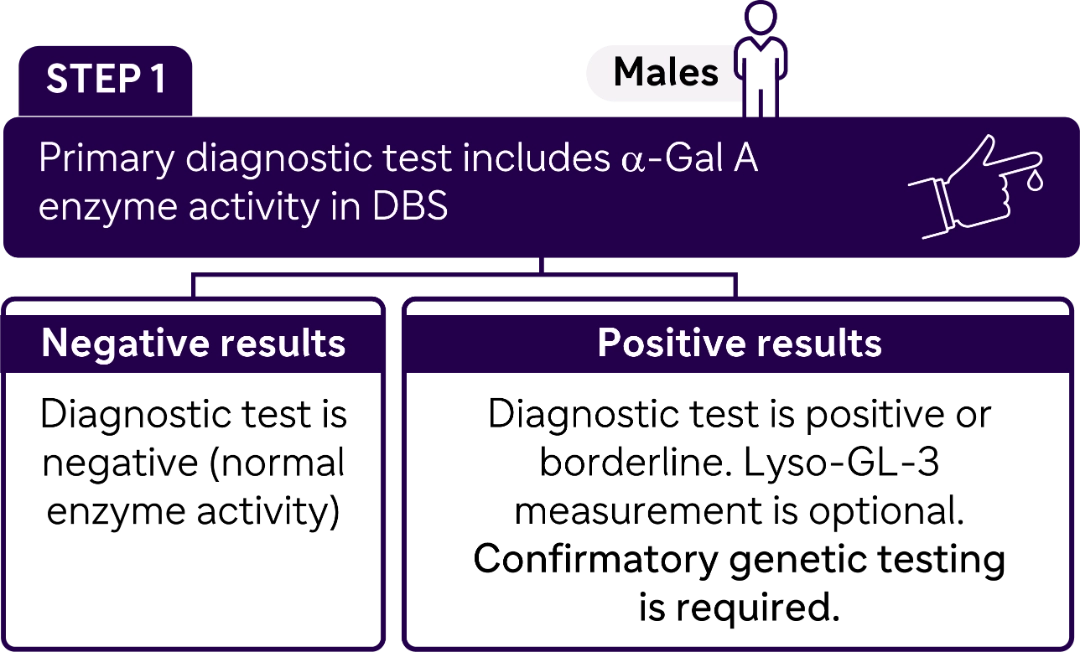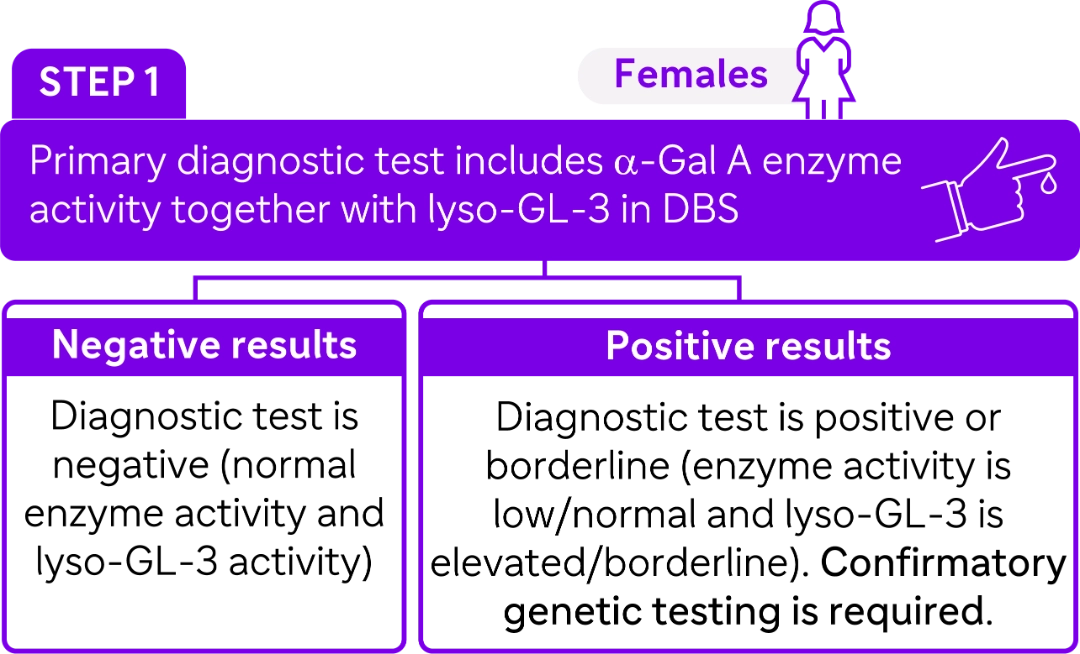Biochemical Diagnostic Strategy in Females Suspected of Fabry Disease
Study objective and method
To demonstrate
 |
The benefits of adding lyso-GL-3 | to ► |  |
Primary diagnostic for testing | for ► |
|
Improving detection rate of potential females with FD
|
First large prospective study
 |
11,948 females with suspicion of FD tested for |
 |
Biochemical tests
|
followed by |  |
Genetic confirmatory testing in 883 females |  |
Groups |
01. Low α-Gal A activity High lyso-GL-3 | 02. Low α-Gal A activity Normal lyso-GL-3 | 03. Normal α-Gal A activity High lyso-GL-3 | 04. Normal α-Gal A activity Normal lyso-GL-3 |
| Classical FD very likely (n=61) | Classical FD unlikely (n=184) | FD very likely (n=256) | 
had normal results (n=11,447*) |
|
| Genetic confirmatory test | No further testing required | |||
Results
 |
(184/883) females were identified with one or two GLA variants. |
Distribution of genetically positive samples
| Better indicator of FD | |||||
|
Elevated lyso-GL-3 levels (39% PPV) |
> |
Low α-Gal A activity (6% PPV) |
Clearly negative results for both biochemical parameters: Unlikely to have FD, even in clinically highly suspicious cases |
||
Proposed diagnosis decision tree
STEP 2
Once enzyme deficiency is confirmed, molecular testing is performed to identify GLA genetic variants.
STEP 2
Once enzyme activity (deficient or not) together with elevated biomarker is confirmed, molecular testing is performed to identify GLA genetic variants.
Conclusion
*Mutation analysis performed in 389 cases.
α-Gal A: Alpha-galactosidase A; dbFGP: Fabry disease genotype–phenotype database; FD: Fabry disease; Lyso-GL-3: Globotriaosylsphingosine; PPV: Positive predictive value; DBS: Dried blood spotting; GLA: Galactosidase alpha; VUS: Variant of unknown significance.

.webp1/jcr:content/science%20hero%20(6).webp)











